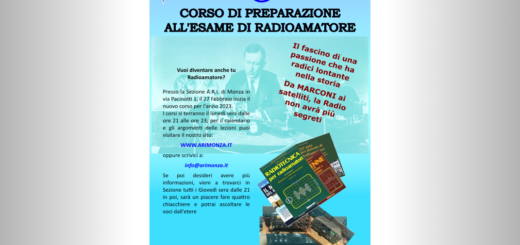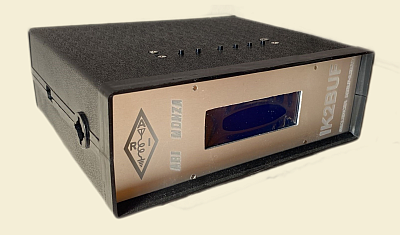contatto 4giugno 2019
ARISS school contact planned for Port Henry, USA
An International Space Station school contact has been planned for Nick Hague KG5TMV with participants at Moriah Central School, Port Henry, NY USA. The event is planned Tuesday June 4, 2019.
The contact is scheduled to begin at approximately 16:22 UTC, which is 18:22 CEST.
The contact will be a telebridge between OR4ISS and ON4ISS, located in Belgium. The downlink signals will be audible in Europe on 145.800 MHz
School presentation
Moriah Central School is located in the foothills of the Adirondack Mountains in upstate New York. It is a K-12 public school with nearly 800 students and 50 teachers. Located near the beautiful Lake Champlain, Moriah Central School is home of the Vikings! With many successful academic and athletic programs such as football, basketball, cheerleading, drama club, band, chorus and many student clubs, many opportunities are available for all students. In addition to a new educational technology center, the district is proud of our distance learning lab, amateur radio station, computer programming classes, and other programs designed specifically in helping the surrounding communities in Essex County. Moriah Central School District proclaims its mission to be the provision of a safe, supportive, and academically challenging environment for all students in our community. We are dedicated to the goals of educational excellence, preparation for college and careers, and the d!
evelopment of a high level of citizenship.
Students Questions:
1. Karen (11): What is the purpose of the International Space Station and why is it a value to all of humanity?
2. Lily (11): What is the most amazing thing you have seen from the space station?
3. Taylor (11): What do you get to do in your free time when you are not working?
4. Landon (10): What types of computer programming languages were used to write the software on board the International Space Station?
5. Jacob (10): What is your favorite piece of hardware to use on the space station and what does it do?
6. Cayden (7): What types of computers are you using on board, and what operating systems do they run?
7. Kyle (8): Do you get to listen to music in space, and if so what do you all like to listen to?
8. Boden (7): What is the most difficult and dangerous thing about living in space?
9. Dieter (7): How many people can fit on board the space station safely?
10. Thomas (6): What is your favorite science experiment on board?
11. Keegan (7): What do you think the importance of future space stations will be?
12. Emily (6): What is the importance of Amateur Radio on the Space Station?
13. Declan (8): What is the status of CIMON (Simon) the Artificially Intelligent robot that was sent to the ISS?
14. Jaiden (11): How did you become an Astronaut? Does your training for space start right away or do you have to move up in ranking?
15. Brayden (4): What is your favorite food in space?
16. Wyatt (5): Are there any manmade objects on earth you can see from the space station?
17. Karen (11): Do you keep a journal of everything you do on board to remember in the future?
18. Lily (11): What can scientists do on Earth to help you on the Space Station?
19. Taylor (11): What is the best part of working with people from different countries every day?
20. Landon (10): What have you learned the most from living and working in Space?
About ARISS:
Amateur Radio on the International Space Station (ARISS) is a cooperative venture of international amateur radio societies and the space agencies that support the International Space Station: NASA, Russian Space Agency, ESA, JAXA, and CSA. The US Center for the Advancement of Science in Space (CASIS) and the National Aeronautics and Space Administration (NASA) provide ARISS special support.
ARISS offers an opportunity for students to experience the excitement of Amateur Radio by talking directly with crewmembers on board the International Space Station. Teachers, parents and communities see, first hand, how Amateur Radio and crewmembers on ISS can energize youngsters’ interest in science, technology, and learning.
The primary goal of ARISS is to promote exploration of science, technology, engineering, and mathematics (STEM) topics by organizing scheduled contacts via amateur radio between crew members aboard the ISS and students in classrooms or informal education venues. With the help of experienced amateur radio volunteers, ISS crews speak directly with large audiences in a variety of public forums. Before and during these radio contacts, students, teachers, parents, and communities learn about space, space technologies, and amateur radio. For more information, see www.ariss.org, www.ariss-eu.org and https://www.amsat-on.be/hamtv-summary/.
An International Space Station school contact has been planned for Nick Hague KG5TMV with participants at Moriah Central School, Port Henry, NY USA. The event is planned Tuesday June 4, 2019.
The contact is scheduled to begin at approximately 16:22 UTC, which is 18:22 CEST.
The contact will be a telebridge between OR4ISS and ON4ISS, located in Belgium. The downlink signals will be audible in Europe on 145.800 MHz
School presentation
Moriah Central School is located in the foothills of the Adirondack Mountains in upstate New York. It is a K-12 public school with nearly 800 students and 50 teachers. Located near the beautiful Lake Champlain, Moriah Central School is home of the Vikings! With many successful academic and athletic programs such as football, basketball, cheerleading, drama club, band, chorus and many student clubs, many opportunities are available for all students. In addition to a new educational technology center, the district is proud of our distance learning lab, amateur radio station, computer programming classes, and other programs designed specifically in helping the surrounding communities in Essex County. Moriah Central School District proclaims its mission to be the provision of a safe, supportive, and academically challenging environment for all students in our community. We are dedicated to the goals of educational excellence, preparation for college and careers, and the d!
evelopment of a high level of citizenship.
Students Questions:
1. Karen (11): What is the purpose of the International Space Station and why is it a value to all of humanity?
2. Lily (11): What is the most amazing thing you have seen from the space station?
3. Taylor (11): What do you get to do in your free time when you are not working?
4. Landon (10): What types of computer programming languages were used to write the software on board the International Space Station?
5. Jacob (10): What is your favorite piece of hardware to use on the space station and what does it do?
6. Cayden (7): What types of computers are you using on board, and what operating systems do they run?
7. Kyle (8): Do you get to listen to music in space, and if so what do you all like to listen to?
8. Boden (7): What is the most difficult and dangerous thing about living in space?
9. Dieter (7): How many people can fit on board the space station safely?
10. Thomas (6): What is your favorite science experiment on board?
11. Keegan (7): What do you think the importance of future space stations will be?
12. Emily (6): What is the importance of Amateur Radio on the Space Station?
13. Declan (8): What is the status of CIMON (Simon) the Artificially Intelligent robot that was sent to the ISS?
14. Jaiden (11): How did you become an Astronaut? Does your training for space start right away or do you have to move up in ranking?
15. Brayden (4): What is your favorite food in space?
16. Wyatt (5): Are there any manmade objects on earth you can see from the space station?
17. Karen (11): Do you keep a journal of everything you do on board to remember in the future?
18. Lily (11): What can scientists do on Earth to help you on the Space Station?
19. Taylor (11): What is the best part of working with people from different countries every day?
20. Landon (10): What have you learned the most from living and working in Space?
About ARISS:
Amateur Radio on the International Space Station (ARISS) is a cooperative venture of international amateur radio societies and the space agencies that support the International Space Station: NASA, Russian Space Agency, ESA, JAXA, and CSA. The US Center for the Advancement of Science in Space (CASIS) and the National Aeronautics and Space Administration (NASA) provide ARISS special support.
ARISS offers an opportunity for students to experience the excitement of Amateur Radio by talking directly with crewmembers on board the International Space Station. Teachers, parents and communities see, first hand, how Amateur Radio and crewmembers on ISS can energize youngsters’ interest in science, technology, and learning.
The primary goal of ARISS is to promote exploration of science, technology, engineering, and mathematics (STEM) topics by organizing scheduled contacts via amateur radio between crew members aboard the ISS and students in classrooms or informal education venues. With the help of experienced amateur radio volunteers, ISS crews speak directly with large audiences in a variety of public forums. Before and during these radio contacts, students, teachers, parents, and communities learn about space, space technologies, and amateur radio. For more information, see www.ariss.org, www.ariss-eu.org and https://www.amsat-on.be/hamtv-summary/.






